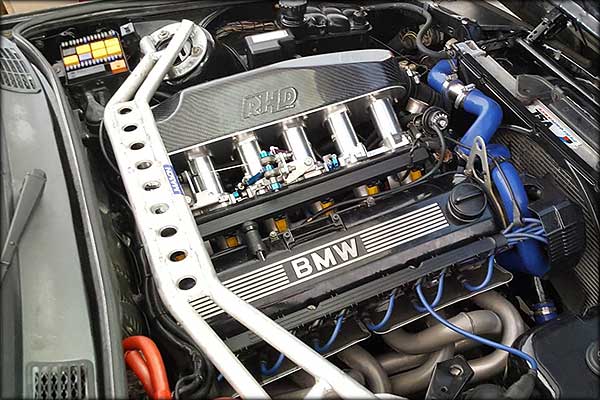Revealing the Intricacies of Next-Generation Power Units: a Deep Study Advanced Engine Layouts and Technologies
In the world of vehicle design, the unrelenting pursuit of effectiveness, efficiency, and sustainability has thrust the advancement of power systems to unprecedented heights. As we stand on the precipice of a brand-new age in transportation, the complexities of next-generation engine designs beckon us to explore the cutting-edge modern technologies and innovations that assure to redefine the driving experience. From advanced materials that press the limits of sturdiness and weight decrease to advanced turbocharging and turbo charging systems that elevate power output to new degrees, each part of these power devices holds a vital to opening the future of automobile design. Delving deeper into the worlds of exhaust control, intelligent engine administration systems, and the perspective of power system development, we discover ourselves on the cusp of a makeover that promises to reshape the landscape of wheelchair as we understand it.
Evolution of Engine Materials

The change in the direction of advanced engine materials has likewise allowed designers to make engines with higher power outputs while maintaining fuel effectiveness requirements. The use of lightweight materials decreases the general weight of the engine, leading to enhanced fuel economy and lower emissions. Additionally, developments in materials innovation have enabled better thermal management within engines, leading to enhanced reliability and longevity.
Turbocharging and Supercharging Technologies
How do Turbocharging and Supercharging Technologies change engine efficiency and effectiveness in contemporary vehicles? Turbo charging and turbocharging are innovations that significantly boost engine performance by increasing the quantity of air intake into the burning chamber. Turbocharging accomplishes this by utilizing a wind turbine driven by exhaust gases to pressurize the intake air, while turbo charging uses a belt- or chain-driven compressor to attain the exact same effect.
These innovations allow smaller sized, much more fuel-efficient engines to produce power comparable to larger ones, called downsizing. Forcibly even more air into the cylinders, turbocharging and supercharging boost combustion performance, leading to raised horsepower and torque outcome without a significant boost in engine dimension. This results in far better velocity, hauling capability, and overall driving performance.
In addition, turbocharging and turbo charging contribute to improved gas efficiency by allowing the use of smaller engines that eat much less fuel under normal driving problems - bmw engine. This combination of boosted efficiency and performance has made turbocharging and turbo charging essential elements of numerous modern-day engine designs
Exhaust Control and Environmental Effect
With raising global worries regarding air quality and ecological sustainability, the application of exhaust control technologies in vehicles plays an important function in decreasing dangerous toxins launched right into the atmosphere. Modern vehicles are outfitted with innovative discharge control systems that aid decrease the environmental influence of automotive operations. Catalytic converters, for example, are designed to convert hazardous gases such as carbon monoxide gas, nitrogen oxides, and hydrocarbons right into much less damaging substances like co2 and water vapor.
Additionally, developments in engine technology, such as the integration of exhaust gas recirculation systems and selective catalytic reduction, have significantly added to lowering exhausts. These innovations work in tandem to enhance burning efficiency and reduce the launch of dangerous contaminants right into the air. Additionally, the development of hybrid and electrical cars represents an important action towards lowering the overall ecological impact of the transport field.
Intelligent Engine Monitoring Solution

In addition, these systems enable cars to fulfill rigorous exhausts criteria without jeopardizing efficiency, giving an extra ecologically friendly driving experience. The integration of expert system and artificial intelligence capacities in engine management systems continues to press the borders of what is feasible, resulting in further improvements in effectiveness, dependability, and general lorry performance. bmw engine. As automotive modern technology advances, intelligent engine management systems will play a vital role in forming the future of transportation in the direction of a much more effective and lasting instructions
Future Trends in Power Unit Advancement
As intelligent engine monitoring systems lead the means for improved control and optimization in modern automobiles, future patterns in power system growth are poised to redefine the landscape of vehicle propulsion innovations. These alternate power sources offer boosted performance and performance while aligning with rigorous environmental policies.
An additional substantial fad is the combination of sophisticated materials and manufacturing methods. Light-weight materials such as carbon fiber and light weight aluminum are check this being used to minimize general lorry weight, improving gas efficiency and performance. Furthermore, innovations in 3D printing and additive manufacturing are enabling view it now the manufacturing of complex engine elements with higher accuracy and durability.
Furthermore, artificial intelligence and artificial intelligence are playing a vital duty in enhancing power system performance. These innovations enable real-time surveillance and adaptive control, leading to more effective and trustworthy power distribution. On the whole, future fads in power system development are geared towards efficiency, efficiency, and sustainability, driving the automobile industry in the direction of a brand-new era of propulsion innovations.

Conclusion
In verdict, the advancements in engine materials, turbocharging, exhaust control, and intelligent administration systems have actually led the way for next-generation power systems. The complex designs and developments in modern engines showcase the recurring advancement of automotive modern technology.
Exploring the modern improvements in engine materials has been critical in enhancing the performance and efficiency of contemporary engines. Over the years, the evolution of engine materials has played a crucial duty in pressing the boundaries of what engines can accomplish.The shift in the direction of progressed engine materials has actually additionally enabled engineers to create engines with greater power outcomes while keeping fuel effectiveness criteria.The application of smart engine monitoring systems in modern vehicles has reinvented the method engines are regulated and maximized for efficiency and efficiency. By gathering information internet in real-time and assessing it with advanced algorithms, intelligent engine monitoring systems can adjust to driving designs, environmental aspects, and engine wellness to optimize power outcome while minimizing fuel consumption and discharges.